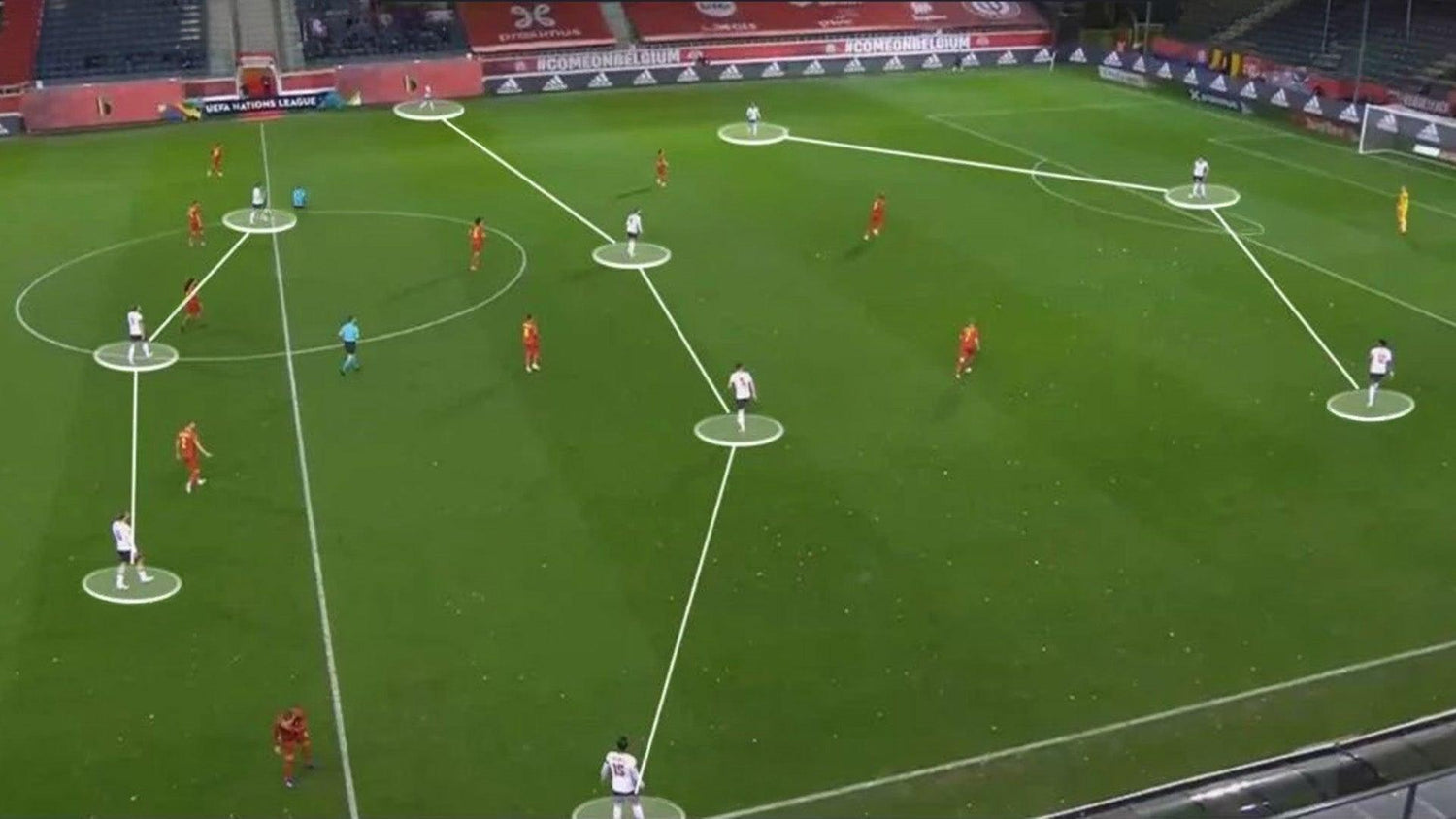The 3-4-3 soccer formation is one of the most balanced setups in modern soccer. It offers flexibility in both attack and defense. The system uses three central defenders, four midfielders, and three forwards. Together, they form a compact but fluid structure. Many top teams use the 3-4-3 formation to dominate possession, create overloads, and switch quickly from defense to attack.
The 3-4-3 soccer formation—sometimes called the 3-4-2-1 formation—adds solid defensive cover while keeping strong attacking options. Success depends on teamwork, smart positioning, and players who can read the game well. The formation encourages midfield dominance and width through overlapping wing-backs and quick passing combinations.
Evolution of the 3-4-3 Formation in Soccer
The 3-4-3 formation soccer strategy evolved from the 3-5-2 soccer formation. That earlier setup was defensive. Coaches began moving one defender higher to strengthen the defensive midfield—and the 3-4-3 diamond formation was born. It allowed teams to stay organized but attack faster.
Clubs like FC Barcelona, Chelsea FC, and Tottenham Hotspur helped make this system famous. Coaches such as Johan Cruyff and Antonio Conte used it to control games with possession while staying solid defensively.
Advantages of the 3-4-3 Diamond Soccer Formation
The 3-4-3 diamond formation offers balance: a solid defense and high attacking potential. Four midfielders—often arranged in a double pivot or diamond—control the tempo. Wing-backs add width, while the lone striker and two wide forwards stretch defenders.
This setup also supports quick counter attacks. Teams can recover shape fast because of the defensive midfield cover. To prepare for this, train with the ROX training system from A-Champs. It sharpens reaction time, awareness, and positioning—skills every team needs to master this formation.
For more on how professionals use this shape, check out Total Football Analysis or The Coaches’ Voice. You’ll find examples from the Premier League and FA Cup that show the 3-4-3 formation soccer system in action.
Preparing for Games Using the 3-4-3 Formation
Preparation is key. Players need awareness, stamina, and understanding of their roles. The central defenders form the base. The defensive midfield duo provides balance and defensive cover. Wing-backs and wide midfielders give width and help control wide areas.
- Positional play: Build awareness and stay compact with a solid defensive structure.
- Passing rhythm: Use short passes to create overloads and progress the ball.
- Fitness and recovery: Maintain energy for pressing and counter attacking after turnovers.
Practice these habits with our soccer rebounder board and soccer passing drills. They replicate match-like situations and sharpen reactions.
Teams and Coaches That Use the 3-4-3 Soccer Formation
Many top coaches use the 3-4-3 formation soccer tactic for its flexibility and control:
- Gareth Southgate (England): His version features strong central defenders and a lone striker supported by wide players.
- Antonio Conte (Chelsea, Tottenham): Known for his double pivot midfield and aggressive counter attacks.
- Johan Cruyff (Barcelona): Used the 3-4-3 diamond formation to encourage fluid passing and positional freedom.
- Roberto De Zerbi (Brighton): Uses short passing and structured buildup to control possession in modern 3-4-3 tactics.
Real-Game Application with ROX Training
The ROXPro and ROXProX systems let players train smarter. They improve reaction time, anticipation, and teamwork. That helps players keep a solid defense and make better decisions in the 3-4-3 soccer formation. With these tools, players can practice reading the game, defending wide areas, and transitioning fast after regaining possession.
Conclusion: Why the 3-4-3 Soccer Formation Works
The 3-4-3 formation soccer strategy balances midfield control, defense, and creativity. Its mix of central defenders, defensive midfielders, and wide players makes it ideal for both pressing and possession play. Whether you’re a coach or player, learning its strengths and weaknesses can give your team a clear advantage.
Explore other formations like the 3-5-2 soccer formation. For more tactical analysis, visit the FIFA Technical Reports or UEFA tactical breakdowns.





Leave a comment
This site is protected by hCaptcha and the hCaptcha Privacy Policy and Terms of Service apply.